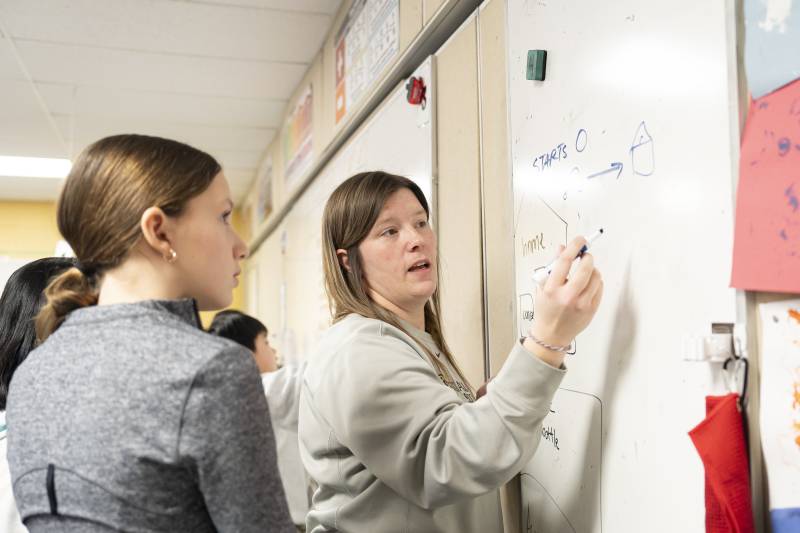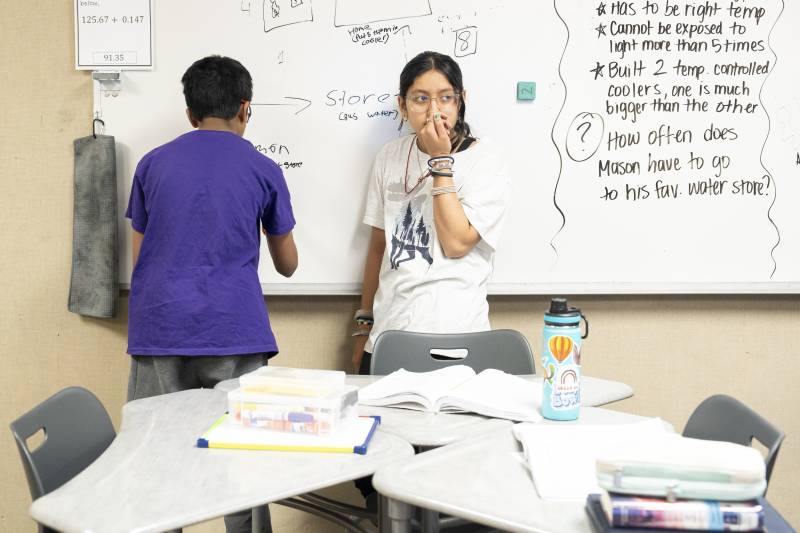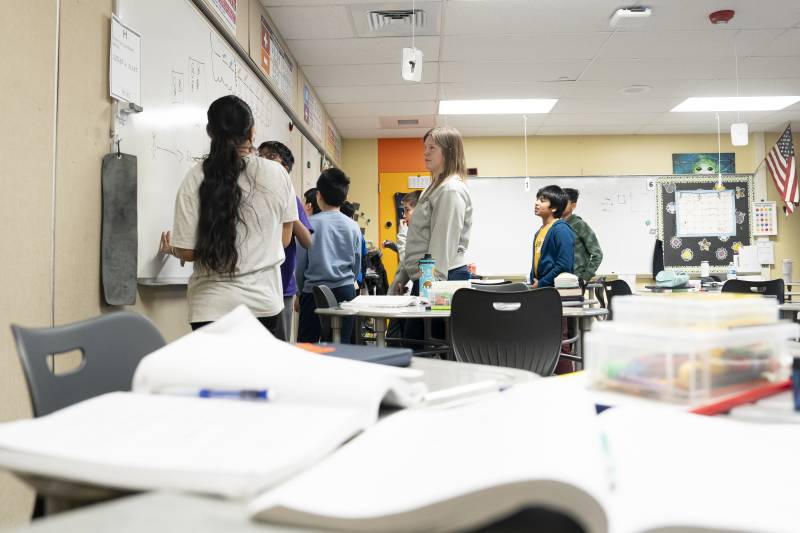While there’s been ample research on tracking’s negative effects, studies of positive effects resulting from detracking are scant. A 2009 summary of 15 studies from 1972 to 2006 concluded that detracking improved academic outcomes for lower-ability students, but had no effect on average and high-ability students.
Proposals to curtail tracking often draw fiery opposition, sometimes scuttling the efforts. The San Francisco Unified School District, which in 2014 detracked math through ninth grade, recently announced that it’s testing the reintroduction of a tracked system, following a lawsuit from a group of parents who alleged that detracking hurt student achievement.

The pushback, often from parents of high-track students, is part of why tracking, especially in math, remains common. In a 2023 survey of middle-school principals by the Rand Corporation, 39% said their schools group students into separate classes based on achievement.
But some places have changed their math classes with minimal backlash, and also ensured course rigor and improved academic outcomes. That’s often because they moved slowly.
Evanston Township High School, in Illinois, started detracking in 2010, collapsing several levels in two freshman-year subjects — humanities and biology — into one.
Then, for six years, the school made no other changes. That allowed leaders to work out the kinks and look at the data to make sure there were no negative effects on achievement, said Pete Bavis, the district’s assistant superintendent for curriculum and instruction.
Teachers liked the mixed-ability classes and asked to expand them to other subjects. In 2017 the school began detracking sophomore and junior English, geometry and Algebra II.
At South Side Middle School and High School on Long Island, detracking went even slower, taking 17 years to fully roll out between 1989 and 2006.During that period, the proportion of students earning New York’s higher-level Regents diploma climbed from 58% in 1989 to 97% by 2005. “I always told parents, when we started moving this through the high school, ‘Look, if this isn’t working, I’m not going to do it. I’m not going to hurt your kid,’” said former South Side High Principal Carol Burris.
Those slow rollouts contrast with what happened in the Shaker Heights City School District in Ohio in 2020. That summer, school leaders needed to simplify schedules to accommodate a mix of online and onsite students because of the pandemic. They saw an opening to do something that had long been in the district’s strategic plan: end tracking in most fifth- through ninth-grade subjects.
But teachers complained last spring that it had gone too quickly, saying that they didn’t get enough training on teaching mixed classrooms, and that course rigor has suffered. Even supporters of detracking suggested it had happened so fast that the district couldn’t lay the groundwork with parents.
Shaker Heights Superintendent David Glasner said he understands those concerns. But he said he also heard from parents, students and instructional leaders who say they’re glad the district “ripped the Band-Aid off.”
In Troy, despite the pushback from parents, the school board voted 6-1 for the change, noting that the district had spent four years studying options and that teachers and outside experts largely supported the plan.
Machesky said if he had it to do over, he’d communicate with parents earlier. The anonymous email took advantage of an information void: The district had communicated the proposal only to parents of current and upcoming middle schoolers. Most who opposed it had younger kids, he said.

Leaders in Evanston and South Side both say they also framed detracking as a way to create more opportunities for all students. As part of getting rid of tracks, Evanston created an “earned honors” system. All students enroll in the same classes, but they can opt into honors credit — which boosts their class grade by a half-point, akin to extra credit — if they take and do well on additional assessments or complete additional projects.
School leaders in South Side also ensured that detracked classes remained as challenging as the higher-level classes had been previously, Burris said. To make sure students succeeded, the school arranged for teachers to tutor struggling students in a support class held two or three times a week and in a half-hour period before school, changing the bus schedules to make that work. Teachers also created optional activities for each lesson that would push higher-achieving students if they mastered the material being covered.
“You have to make sure you’re not taking something away from anyone,” said Burris.
To prepare for pushback, Evanston also formed a “rapid-response team” that answered parent questions about the new system within 24 hours and developed dozens of pages of frequently updated FAQs. That took the pressure off teachers, letting them focus on the classroom, said math department chair Dale Leibforth. By the end of the first year of detracking, the school had gotten just three complaints, all requests for fixes to narrow technical problems rather than wholesale critiques, said Bavis.
“We imagined a catastrophe,” he said. “We asked, ‘what could go wrong?’” and mapped how to handle each scenario.

In response to continued critiques of its detracking effort, last fall Shaker Heights pioneered another idea: an evening immersion experience that lets parents sit through detracked classes, followed by questions and answers.
Parents were respectful but probing: How do teachers work together to make the new system work? Do kids know when they’re grouped with others who are struggling in a skill? Are the books we worked with really at sixth-grade level? While there’s no data on the session’s effects, Glasner says they “absolutely did move the needle” on community opinion.
Research from the Century Foundation, a progressive think tank, suggests that districts should focus on how detracking helps all students, rather than emphasizing that the efforts are aimed to advance equity and benefit students in lower tracks, said senior fellow Halley Potter. That approach gives parents of higher-track kids the idea that their own child’s academics are being sacrificed to help others.
That fits with what Machesky thinks happened last spring in Troy. “We kind of got caught up with the equity arguments that were raging in districts nationally at the time,” he said.
After last May’s board vote, opponents launched a recall petition against three board members who’d voted in favor of the change. To get on the ballot, it needed 8,000 signatures but got fewer than half that.
Since then, the opposition there has gone silent.
Last fall the district held “math nights” to talk about the new system and let parents ask questions. The students have settled in. “I have received zero negative communication from parents — no emails, no phone calls — zero,” said Machesky.




